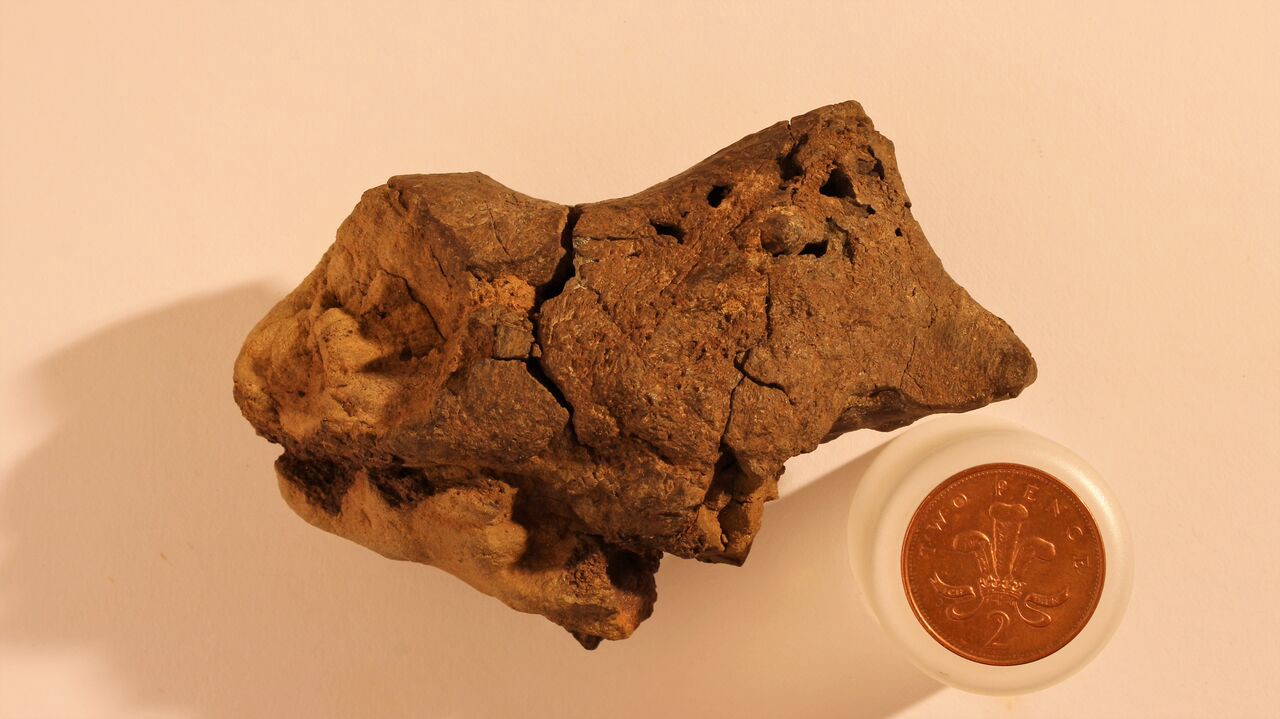It may have been little more than a curiosity when fossil hunter Jamie Hiscocks picked up a funny looking rock on a beach in Sussex, England, in 2004. A decade on, it turns out that rock was much more than a mere oddity: It was a piece of fossilized brain tissue, most likely belonging to a dinosaur that lived 133 million years ago.
“This isn’t a revelation. Of course a dinosaur had a brain, but we’re actually seeing some of the textures of the brain themselves, which I never thought we’d ever do,” says University of Cambridge paleobiologist David Norman, a coauthor of the new study, in a video accompanying the announcement.
Norman’s pessimism was not entirely unjustified. Soft tissues such as skin, muscle, and brain often decay before they have a chance to fossilize, leaving little more than skeletons behind. But under the right conditions—most importantly, a low-oxygen environment such as one might encounter within a bog, swamp, or, somewhat more famously, tar pits—soft tissues can survive for thousands or even millions of years.
“We’re actually seeing some of the textures of the brain themselves, which I never thought we’d ever do.”
Whatever it was that preserved this particular specimen, Norman, together with Alexander Liu and other colleagues, took a look at the rock and thought it bore a close resemblance to the outer protective layer, or meninges, of a small reptile brain. A comparison with previously discovered fossils suggests it would fit inside the brain case of an iguanodon or a similar dinosaur. The timing is about right too—the fossil was found near the Tumbridge Wells sand formation, which formed roughly 133 million years ago.

(Photo: Jamie Hiscocks)
Closer inspection using a scanning electron microscope and a technique called X-ray microtomography—essentially, a three-dimensional reconstruction based on a collection of X-ray images—revealed structures resembling the meninges of modern-day birds and reptiles, along with other structures with “considerable fine-scale complexity,” which the researchers speculate could be the fossilized remains of individual neurons in the brain.
The research is reported in a special publication of the Geological Society of London in honor of Martin Brasier, who is credited as first author on the study. Liu’s advisor and a well-regarded Oxford University paleobiologist, Brasier died in a car accident in 2014.





